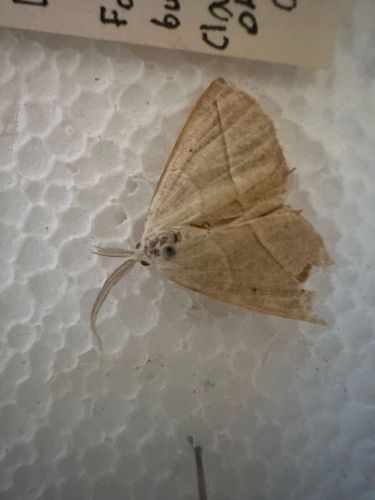Moth
Scientific Name: Unidentifiable to species from image, likely in the family Geometridae or Noctuidae.
Order & Family: Lepidoptera (Order), Geometridae or Noctuidae (Family)
Size: Highly variable, typically 10mm to 100mm wingspan, with the moth in the image appearing to be in the smaller to medium range.

Natural Habitat
Widely varied depending on species, including forests, grasslands, gardens, and urban areas. Larvae are typically found on host plants.
Diet & Feeding
Adult moths often feed on nectar or other sugary liquids, though some species do not feed at all as adults. Larvae (caterpillars) are typically herbivorous, feeding on leaves, stems, or roots of specific host plants.
Behavior Patterns
Mostly nocturnal, attracted to light. Rest during the day, often camouflaged against bark or leaves. Life cycle includes egg, larva (caterpillar), pupa, and adult stages. Some species are migratory.
Risks & Benefits
Potential risks include some larvae being agricultural pests (eating crops, trees). Benefits include pollination of plants by adults, serving as a food source for other animals (birds, bats), and acting as bioindicators of environmental health.
Identified on: 9/25/2025